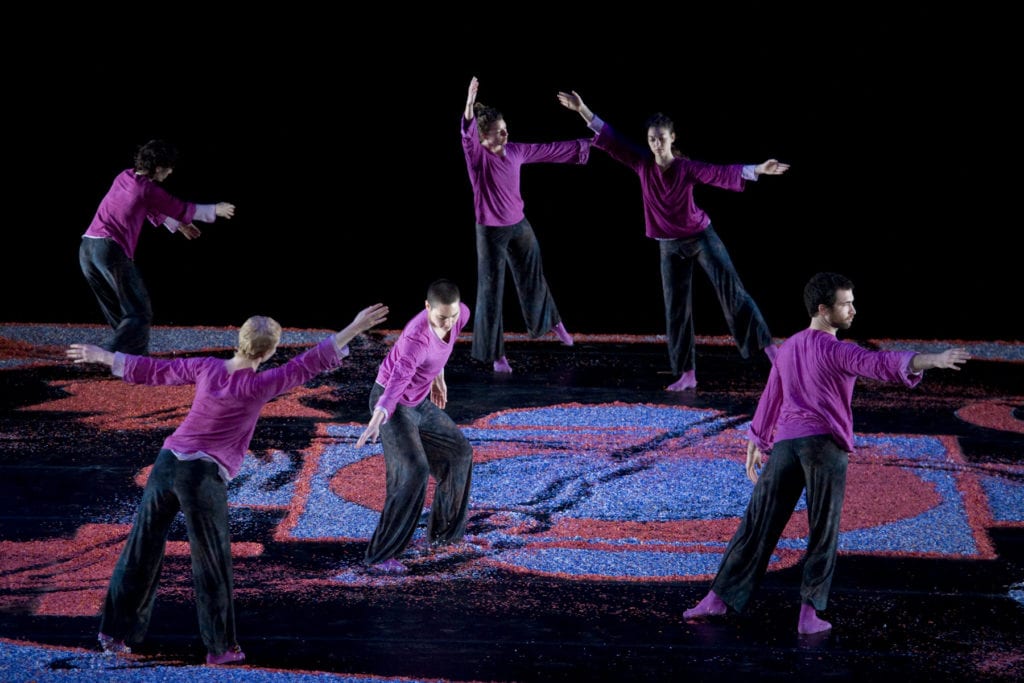


During his unprecedented two-week residency at Duke in January 2009, the polymathic Shen Wei, who choreographed the opening ceremony at the Beijing Olympics, immersed himself in Durham, teaching master classes, examining connections between traditional and modern dance, and discussing art as international relations. At Reynolds Industries Theater, the Chinese-born dynamo — called “one of the great artists of our time” by The Washington Post — further developed the second and third parts of his breathtaking trilogy, Re-, which links geopolitical “hot spots” to political ones.
Shen Wei’s two-week residency culminated in two work-in-progress performances, including all of Re- (Part I) and sections of Re- (Parts II and III). The Re- triptych premiered at the American Dance Festival in Durham in June 2009 as ADF’s inaugural presentation at the newly created Durham Performing Arts Center (DPAC).
[foogallery id=”10511″]
The Re- Triptych
In 2009, Shen Wei Dance Arts unveils the crown jewel of the Re- Triptych with Part III: The New Silk Road, Shen Wei’s first, and long-anticipated, choreographic return to his native China.
Part III follows on the international triumph of parts I (Tibet) and II (Angkor Wat), completing Shen Wei’s impassioned response to the Orient after some fifteen years abroad. In an internationalist style, the Triptych navigates religious, cultural, and geographic complexities in each region through an intensely personal, thoroughly modern dance and visual vocabulary.
At once introspective and universal, the Triptych uses the prefix “Re-” to invoke concepts such as “renew,” “reconsider,” “rediscover,” “revisit,” and “repair.” With the Triptych, the world enters on an artist’s coming home: a reconciliation of life split between two hemispheres; a coming to terms with seemingly incompatible societies; a profoundly generous spiritual offering; and a hopeful plea for reconciliation and understanding. With the Triptych, we partake in a dynamic journey through three of the world’s most mysterious, magnificent societies — all through the lens of Shen Wei’s masterful, “breathtaking” dance, photography, and other found materials.
Part I: Tibet
Part I, based on Shen Wei’s extensive travels among the TIbetan people, is a deeply personal — even spiritual — dance, incorporating traditional Tibetan chants and a stunning, full-stage Tibetan Mandala (made of colorful paper shards). With movement drawn from Shen Wei’s experience of oxygen deficiency and lowered center of gravity on the Tibetan Steppe, Boston Globe described Part I as a space where “purity and nirvana have become one.” Set to the music of an exiled Tibetan nun, Ani Choying Drolma, “the dancing is brilliant, and the patterns are powerfully compelling” (The New York Times).
Part II: Ankgor Wat
Part II is a large-scale work combining two of Shen Wei’s trademark choreographic styles — tableaux vivanic and transference. Inspired by Shen Wei’s study of traditional Cambodian dance, the strained tangle of Banyon trees at Angkor Wat, and Buddhist and Hindu impressions on the walls of that ancient empire, Part II is a “work of beauty so singular it literally fossilizes the audience” (Le Devoir). The work showcases Shen Wei’s characteristic surrealism: other-worldly, transported figures invoke the intricate, mysterious friezes on Angkor’s submerged walls, culminating in a massive human tableau — bleached, exposed, immobile, transcendent. Featuring environmental sound collected on-site from the forgotten temples scattered throughout the jungle, Part II was commissioned and premiered at Les Grands Ballets de Montreal in 2007 and makes its US debut at the American Dance Festival in June, 2009, where Shen Wei Dance Arts performs the work for the first time.
Part III: The New Silk Road
Celebrating China’s vast and divergent religious traditions, languages, and cultural histories, Part III contemplates China’s role as a once and future arbiter of trade, ideas, and populations. Rather than looking back, Part III uses the Silk Road to explore China’s future as a convergence of cultures — from the Middle East, the West, and its own myriad ethnic populations.
Commissioned by Duke Performances.